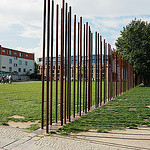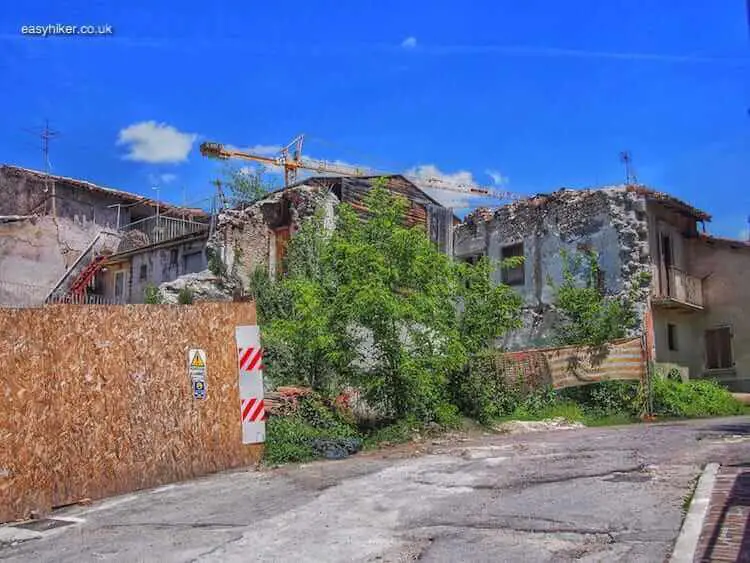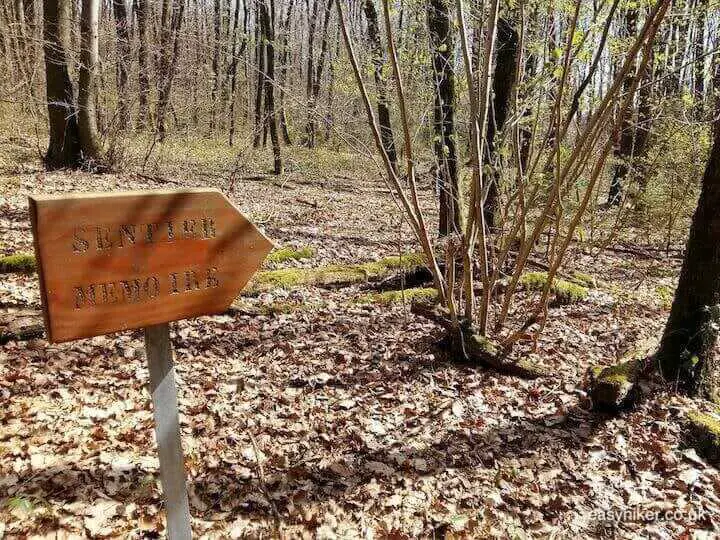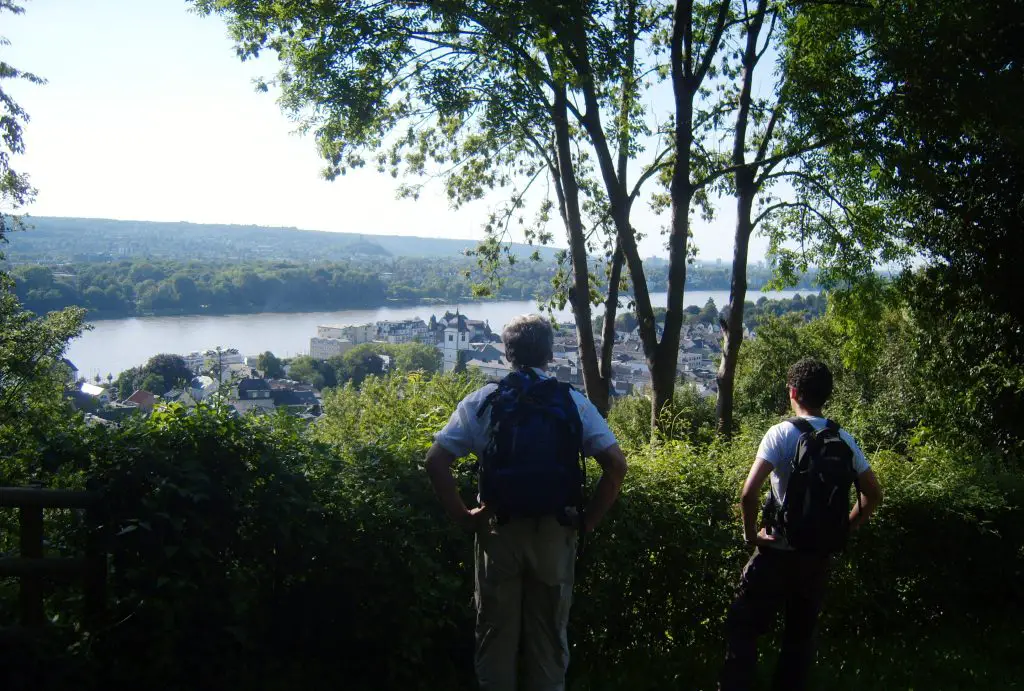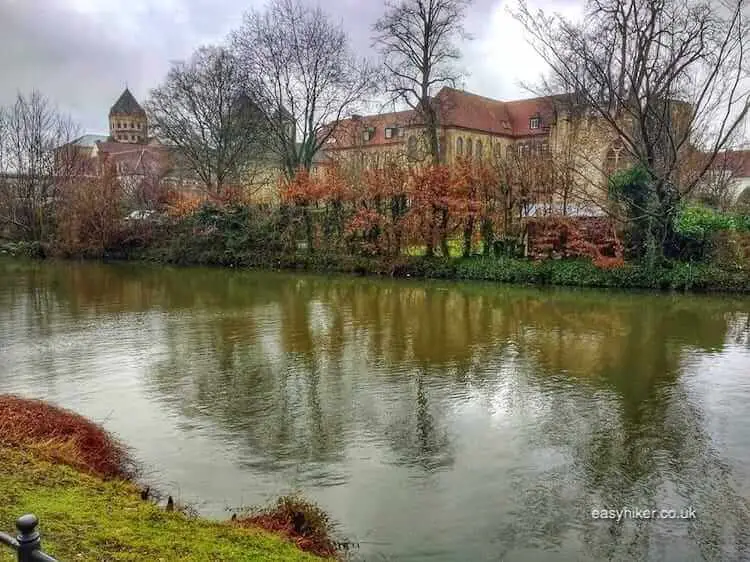Today, we will be offering you: a lake that looks occasionally like a piece from the Amazon jungle …

… a river that looks occasionally like a canal …

… a gem of an old town with plenty of interesting views and motives …

… and a spate of horses, largely in one shape and size but, to make up for this disappointing lack of variety, draped out in all colours of the rainbow …

… or none at all.

Let us start with the horses and an explanation of why they seem be everywhere you look – even nailed above the door to, of all things, a bicycle repair shop (see the picture above).
The northwestern German town of Warendorf, our destination for the day, is the country’s centre of equestrian sport. Most of Germany’s Olympic champions in equestrian events – of which there have been many over the years – come from this part of the country.
The long line of Gold medals for Warendorf starts with Hans-Günter Winkler. In the first round of the 1956 Olympic showjumping competition, he pulled a groin muscle but, against the advice of the team doctors, refused to withdraw.
It is said that he was practically semi-conscious from pain and had to leave the job of completing the second round to his trusted mare Halla – who did so without a flaw, winning gold for Winkler and Germany.
Warendorf has dedicated an entire street to the memory of the region’s Olympic champions: it is called the “Strasse der Olympiasieger”, and every ten metres or so on the street’s pavement, you will find a plaque that honours a local boy or girl who has won Olympic gold in an equestrian event.

We will get to that street in due course but start our walk with a tour of the old town.
Warendorf is a town of many markets: there is the old market for bread and grain (Heumarkt), for live animals (Schweinemarkt), but above all there is the large central market square which is framed by the City Hall from 1404, the oldest secular building in town, and stately residential homes from six centuries.

Stroll a little through the streets of the old town. It is scenic and highly picturesque throughout, although perhaps not grandly “historic” – Warendorf is simply not the kind of place where that type of “history” has been made.
It is more the place where they celebrate the fact that the 8th meridian passes right through the municipal park. I mean: fancy that!

After your exploration of the old town, cross the river Ems via the Strasse der Olympiasieger and turn right just before the second body of water, the Emssee or Ems Lake.
Until the middle of the 20th century, this was no lake at all but the bed of the river Ems itself, which is Germany’s shortest strom, a German word for a river that flows into the sea rather than another river (learn something new every day!).
Among people responsible for the region’s hydraulic infrastructure, however, the Ems was mainly famous (and notorious) for its low gradient, flowing a mere 130 metres downhill over a total length of 370 km (at a lower average speed than most canals) and spreading freely over vast areas of the neighbouring countryside whenever it felt like it.
To tame and to better control the Ems, a multi-stage project to regulate the river was eventually launched during the 1930s and 1950s.
Nowadays, just before the Ems can enter Warendorf from the east, it is being diverted into a new river bed, and the old river, now a dead branch, becomes the Ems Lake.

Take a leisurely canter through Warendorf with a walk along the shore of the lake until, after about 30 minutes, you meet the new Ems which now follows the will of humans rather than its own naughty whims.
Turn right to continue your walk along the right bank of what you would, depending on your temperament, consider as either a properly civilized or a zombified river …

… and, another 15 minutes or so later, use the first bridge to cross back into Warendorf town.

For the remainder of the walk, you will pass by the outer wall of the city’s ancient fortifications, getting sporadic views of the 17th century Franciscan convent that stands just on the other side of the wall.

After your return to the town centre, you should, if you still have time, head for a brief excursion to the Marienkirche. You may have caught an occasional glimpse of the oddly shaped church tower during your first stroll through the old town, and now is the time to take a closer look.
The nave of the Marienkirche was rebuilt in the years before WWI, but the tower is mostly a 12th century original and may have doubled up as a part of the town fortifications and as a place for refuge for Warendorf’s citizens when the town came under attack.

There is also a pretty garden right next to the church that invites you to take a break and sit down for a while …

… finishing your walk with a coda that picks up its main leitmotif of “calm, peaceful and serene”. Warendorf is not a three-star destination to attract visitors from far-away continents, but worth the trip if you are in the area and looking for a delightful day-out.
There are many things to see and to enjoy. Warendorf is definitely not a one-horse town.


